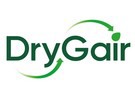High energy costs, discussions of carbon emission regulations, and the widespread shift to LED lighting have been pushing many greenhouse growers to seek efficient and effective dehumidification solutions.
The past couple of years have seen a drastic change in greenhouse lighting, from HPS lights to more efficient LEDs. This saves a lot of energy. However, it also creates a new challenge – humidity.
LED bulbs emit much less heat radiation than HPS bulbs, such as SON-T. This loss of heat increases the actual relative humidity in the space, which leads to higher mold rates, and less plant activity.
On the other hand, compensating with additional heating doesn't provide a complete solution. The added energy costs can be quite high, and the increase in plant activity, which is good for the crop, results in higher moisture levels as well.
So, the switch to LED lighting makes active dehumidification a necessary piece of the greenhouse puzzle. Overall, when all pieces are put together effectively, this shift has proven potential to improve and increase yields, while cutting energy costs.
U.N. Food and Agriculture Organization Recommends Active Dehumidification for Vegetable Greenhouses
A recent GAP (Good Agricultural Practices) report, from the U.N.'s Food and Agriculture Organization (FAO), for greenhouse vegetable crops, also recommends using active dehumidification. It's described as an effective way to prevent diseases and molds and save significant energy.
This GAP recommendation doesn't come as a surprise to many greenhouse growers around the world who are already reaping the benefits of active dehumidification. However, it may act as a milestone in the shift to the new greenhouse cultivation method – closed greenhouse, thermal screens, LED lighting, and active dehumidification.
DryGair, one of the leading manufacturers in the dehumidification space, will be presenting its patented system at the upcoming Canadian Greenhouse Conference in Ontario, Oct. 9-10. You're invited to discuss your needs with their team at booth #1115.
For more information:
DryGair
www.drygair.com
